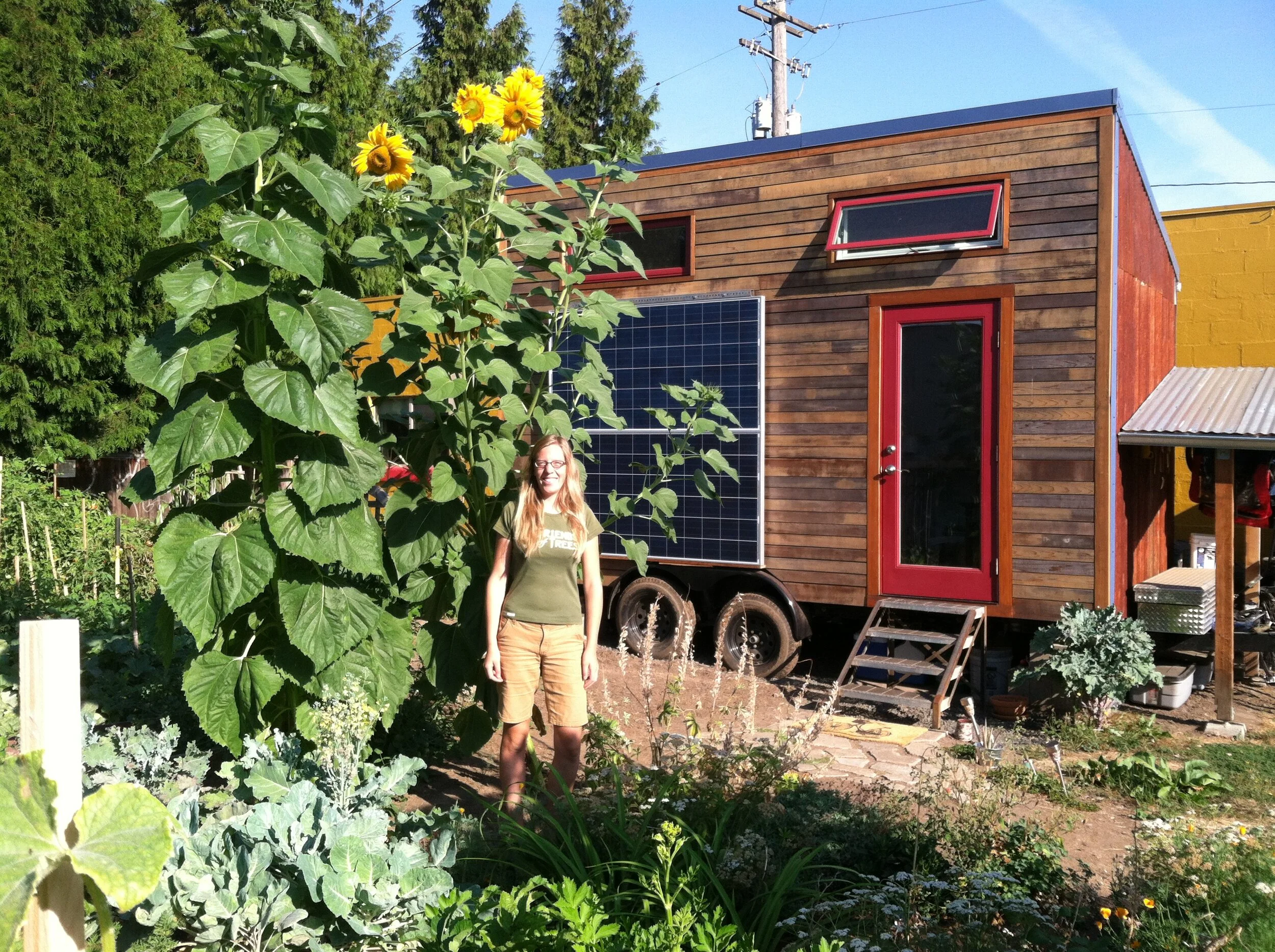Wow, what a crazy winter we have had this year! When I first talked to the people who are hosting my tiny home and me, they told me snow was more of a novelty than the norm. So I wasn't expecting multiple snowstorms, feet of snow on the ground for months, and days when I couldn't get to work because I had to wait for the rural roads where I live to be plowed. They say this has been a record winter, worse than any in 20 years, so maybe I should consider myself lucky to have had this experience. Don't get me wrong, snow can be beautiful when it's falling and waking up to a blue sky and snow topped ponderosa pines is downright magical. It's the cold, the shoveling and the treacherous road conditions dealt with on a daily basis that remind me why I moved away from a snowier climate. Can you tell I'm ready for spring?

I am happy to say my tiny house has held up to the snow and below zero temps. Well mostly. My cantilevered door awning did manage to build up enough snow to split and rip apart the siding and furring strips I had lag screwed it to so I'm going to have to do some repairs to get it reinstalled. Luckily I had added a 2x4 across the horizontal supports so the polycarbonate didn't break.
I did invest in a heated water hose this winter and it was the best decision I could have made. For around $100, I have had running water all winter long. We didn't end up installing a frost free hydrant but the utility shed structure and a little bit of insulation around the water hose connections were enough to keep the line from freezing. I had guessed that I would be dealing with colder weather for a longer period of time than I had in Portland, and boy was I right! I highly recommend buying and using one if you live in a climate with below freezing winter temps.
Also, I bought an oil filled radiant heater to use as the primary heat source for my home. I usually had it set on the low or eco modes at 65 degrees (the lowest temp possible), and that was more than adequate to keep the house warm even in sub zero conditions.















